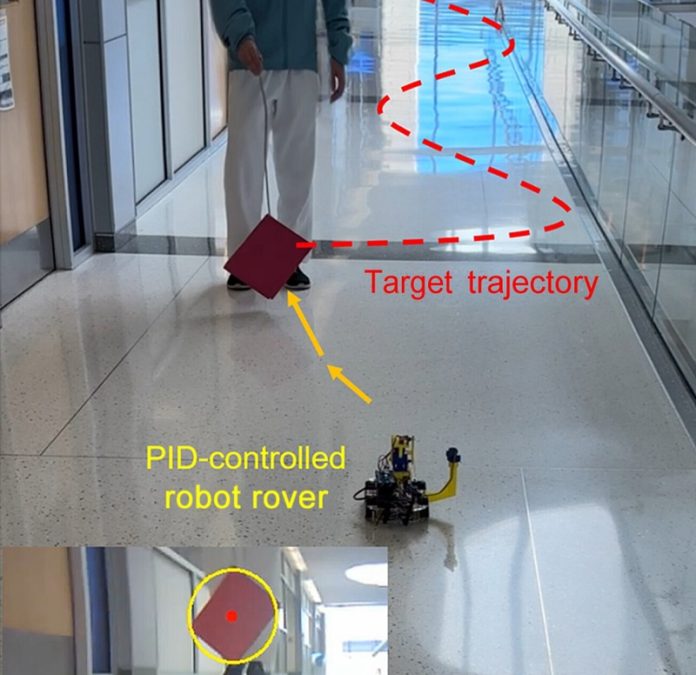
A team at the University of Michigan has built a tiny new computer that acts like a brain and uses extremely little energy—just 12.5 microwatts, similar to what a heart pacemaker uses.
This small, powerful device could help drones and robots become lighter, faster, and more efficient.
The new controller helped a rolling robot follow a zig-zagging target down a hallway with the same speed and accuracy as a normal, power-hungry computer.
It also worked well in another test, helping a drone lift and balance a moving arm.
What makes this controller special is how it processes information.
It uses something called a memristor, a new kind of circuit part that remembers and responds to electrical signals. Memristors behave a bit like brain cells (neurons), learning and changing with use.
They can even “forget” old signals over time—just like how our brains let go of unimportant information.
This is a big deal because most modern electronics use digital computing, which means they have to constantly change real-world (analog) signals—like light, sound, and touch—into digital code and back again. That takes time and energy.
But since sensors and motors are usually analog, this new controller can skip the conversion step, saving power and reacting faster.
The memristor chip was built using a clever method. The researchers rubbed a gold-tipped tool across a chip, which created static electricity.
This helped guide a special material—bismuth selenide—to form tiny lines, thinner than a strand of DNA, in a tic-tac-toe pattern. They added gold and titanium at the ends to complete the circuit.
The chip was connected to a regular processor that turned camera or position data into signals the memristor network could understand. The memristors processed the data and sent it back to the robot’s motors or drone’s rotor to take action—like following a red card or balancing a moving arm.
“This could help robots react quickly, like when we touch something hot and pull our hand back,” said Mingze Chen, one of the researchers. “It might not be super precise, but it’s fast and low-power.”
The new technology could be useful not just for space rovers and drones, but also for cars and other machines that need to think and move on their own. Right now, it takes a lot of energy to run autonomous vehicles. Using low-power, brain-like chips could make them much more efficient.
This could also help with edge computing—processing data right where it’s collected, instead of sending it to a faraway server. That means faster responses and less energy used overall.
As robots get smaller and smarter, this kind of brain-inspired tech could lead the way.



